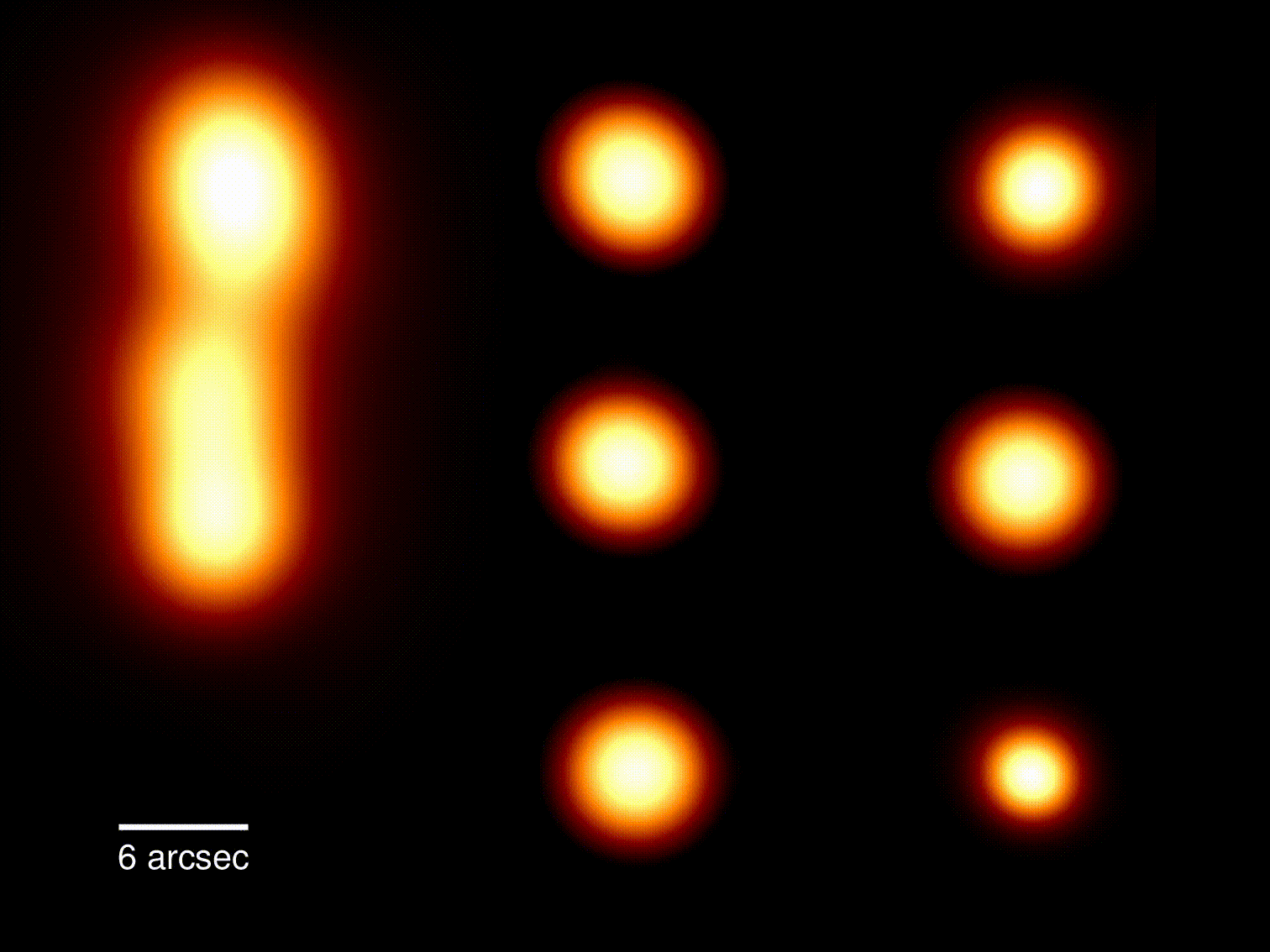The most detailed images of galaxies are obtained thanks to LOFAR, a network of 70,000 antennas
The IAA-CSIC heads one of the eleven articles that make up a special issue of the journal Astronomy & Astrophysics on the results of LOFAR
After almost a decade of work, an international scientific team has published the most detailed images ever obtained of galaxies, which provide information about their internal workings in unprecedented detail. The images were created from data collected by LOFAR (Low Frequency Array), a network of more than 70,000 small antennas distributed throughout Europe. The images and the associated scientific results have been published in a special issue of the journal Astronomy & Astrophysics, one of them headed by the Institute of Astrophysics of Andalusia (IAA-CSIC).
![A compilation of the science results. Credit from left to right starting at the top: N. Ramírez-Olivencia et al. [radio]; NASA, ESA, the Hubble Heritage Team (STScI/AURA)-ESA/Hubble Collaboration and A. Evans (University of Virginia, Charlottesville/NRAO/Stony Brook University), edited by R. Cumming [optical], C. Groeneveld, R. Timmerman; LOFAR & Hubble Space Telescope,. Kukreti; LOFAR & Sloan Digital Sky Survey, A. Kappes, F. Sweijen; LOFAR & DESI Legacy Imaging Survey, S. Badole; NASA, ESA & L. Calcada, Graphics: W.L. Williams.](/sites/default/files/i0_compilation.jpg)
REVEALING THE HIDDEN UNIVERSE
The universe is flooded with electromagnetic radiation, of which visible light, the one captured by our eyes, is only a small portion. From short wavelengths, like gamma rays and X-rays, to long wavelengths, like radio, each part of the spectrum of light reveals something unique about the universe.
The LOFAR network captures images at radio frequencies that, unlike shorter wavelength sources such as visible light, are not blocked by clouds of dust and gas that can obscure astronomical objects. Thus, regions of the sky that appear dark to our eyes glow brightly in radio waves, and radio telescopes allow us to observe areas obscured by dust, such as regions where stars form or the heart of galaxies.
The new images obtained with the LOFAR network go beyond the limits of what we know about galaxies and supermassive black holes. The images reveal the inner workings of both nearby and distant galaxies with a resolution twenty times sharper than typical LOFAR images, made possible by the unique way the team made use of the network.

The more than 70,000 LOFAR antennas are spread across Europe, with the majority in the Netherlands. In standard operation, only signals from antennas located in the Netherlands are combined and a virtual telescope is created with a collecting surface of about 120 kilometers in diameter. By using signals from all European antennas, the team has increased the diameter of the "lens" to nearly two thousand kilometers, providing a twenty-fold increase in resolution.
Furthermore, unlike conventional array antennas that combine multiple signals in real time to produce images, LOFAR uses a new concept in which the signals collected by each antenna are digitized, transported to the central processor, and then combined to create an image. Each LOFAR image is the result of combining the signals of more than 70,000 antennas, which makes its extraordinary resolution possible.
A CHALLENGE OF A DECADE
Even before LOFAR began operating in 2012, the European scientific team began to work on the colossal challenge of combining the signals of more than 70,000 antennas located at a distance of up to two thousand kilometers. "Our goal is that our work allows the international scientific community to use the entire European network of LOFAR telescopes for their own science, and to create high-resolution images with relative ease without having to spend years acquiring the knowledge," says Leah Morabito, researcher at Durham University who has coordinated the work.
The LOFAR results provide new perspectives on known galaxies, show their structure in detail and allow the detection of jets and ejections of material emerging from supermassive black holes in galactic nuclei. Specifically, the Institute of Astrophysics of Andalusia (IAA-CSIC) has contributed with a study of the galaxy Arp-299, which stands out for its high rate of supernova production, or explosions produced by the death of stars with more than eight times the mass of the Sun.
"At the IAA we have been investigating this galaxy for years, which due to the interaction with the companion galaxy is generating outbreaks of star formation -says Naím Ramírez-Olivencia, IAA researcher who heads the study-. It is, therefore, a very interesting object because it allows us to study in almost real time how stars are born, die and interact with the surrounding environment ".
"Our work has been chosen for this compendium of articles related to LOFAR because it is one of the first to show the capabilities of this wonderful instrument for low radio frequencies. Thanks to LOFAR we have managed to detect, for example, a gas outflow emanating from one of the nuclei of the Arp299 galaxy system, and with a scale comparable to the galaxy from which it emanates. Such a result has only been possible thanks to the great sensitivity and resolution of LOFAR, which in its current configuration constitutes a milestone in the astronomy and opens up a world of new discoveries", concludes the researcher.
List of LOFAR papers: https://www.astron.nl/wp-content/uploads/2021/08/papers1782021.pdf
Instituto de Astrofísica de Andalucía (IAA-CSIC)
Unidad de Divulgación y Comunicación
Silbia López de Lacalle - sll[arroba]iaa.es - 958230676
https://www.iaa.csic.es
https://divulgacion.iaa.csic.es

![A galaxy-sized wind is revealed billowing out from a giant star factory, in a dust-enshrouded nucleus, that was triggered as two galaxies merge. Credit: N. Ramírez-Olivencia et el. [radio]; NASA, ESA, the Hubble Heritage Team (STScI/AURA)-ESA/Hubble Collaboration and A. Evans (University of Virginia, Charlottesville/NRAO/Stony Brook University), editada por R. Cumming [optical]](https://www.iaa.csic.es/sites/default/files/styles/blog_teaser/public/banners/news/i5_merginggalxies_ramirez-olivencia.jpg?itok=SOapltLc)